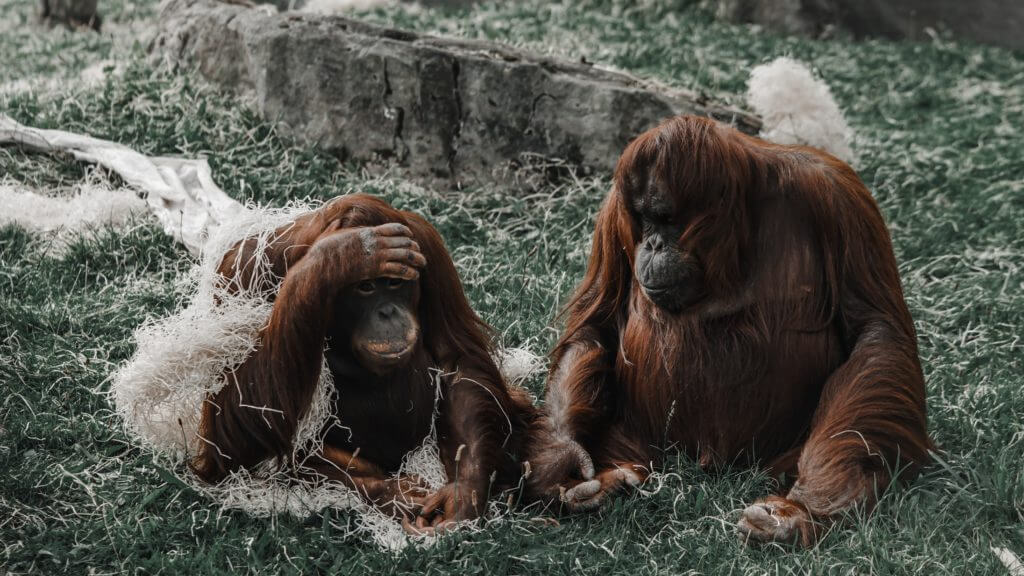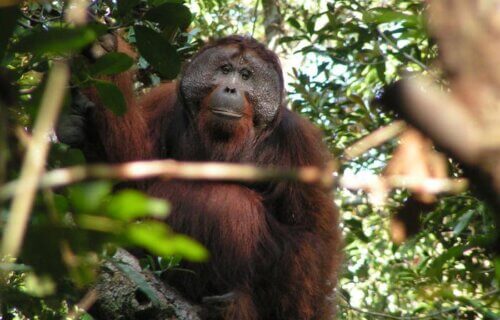COVENTRY, United Kingdom — Orangutans appear to be the “beatboxers” of the jungle — making two sounds at the same time, a new study reveals. Scientists say the great apes, native to the rainforests of Indonesia and Malaysia, make these sounds simultaneously, much like songbirds or people who perform this vocal percussion that mimics a drum machine.
The University of Warwick research team believe their findings provide clues to the evolution of human speech. Study authors observed two populations of vocalizing orangutans in Borneo and Sumatra for a total of 3,800 hours and found primates in both groups used the same beatboxing technique.
“Humans use the lips, tongue, and jaw to make the unvoiced sounds of consonants, while activating the vocal folds in the larynx with exhaled air to make the voiced, open sounds of vowels,” says Dr. Adriano Lameira, Associate Professor of Psychology, in a university release. “Orangutans are also capable of producing both types of sounds—and both at once.”
“For example, large male orangutans in Borneo will produce noises known as ‘chomps’ in combination with ‘grumbles’ in combative situations. Female orangutans in Sumatra produce ‘kiss squeaks’ at the same time as ‘rolling calls’ to alert others of a possible predator threat,” Lameira continues.
“The fact that two separate populations of orangutans were observed making two calls simultaneously, is proof that this is a biological phenomenon.”
“Humans rarely produce voiced and voiceless noises simultaneously. The exception is beatboxing, a skilled vocal performance which mimics the complex beats of hip hop music,” adds study co-author and independent researcher Madeleine Hardus.
“But the very fact that humans are anatomically able to beatbox, raises questions about where that ability came from. We know now the answer could lie within the evolution of our ancestors.”
Listen to an orangutan ‘beatboxing’ here

The researchers believe humans have underestimated the vocal control and coordination abilities of wild great apes in comparison to the focus scientists have placed on the vocal abilities of singing birds.
“Producing two sounds, exactly how birds produce song, resembles spoken language but bird anatomy has no similarity to our own so it is difficult to make links between birdsong, and spoken human language,” Dr. Hardus explains.
These findings, published in the journal PNAS Nexus, have implications for those studying the capabilities of our evolutionary ancestors as well as the development of human speech. It may even explain how people created and mastered the art of beatboxing in the first place.
“Now that we know this vocal ability is part of the great ape repertoire, we can’t ignore the evolutionary links,” Dr. Lameira concludes.
“It could be possible that early human language resembled something that sounded more like beatboxing, before evolution organized language into the consonant – vowel structure that we know today.”
You might also be interested in:
- Just like ‘The Jungle Book’: Orangutans can really ‘talk,’ revealing origins of communication
- Primate DNA helps scientists close in on origin of modern disease mutations
- Gorillas enjoy getting high — from spinning themselves dizzy, videos show
South West News Service writer Stephen Beech contributed to this report.


You mean…
Humans put on concerts on stages and are capable of “beatboxing” just like apes.
When I was a kid scientists sneered at such information. Let’s thank a generation of primatologists for overthrowing that attitude.